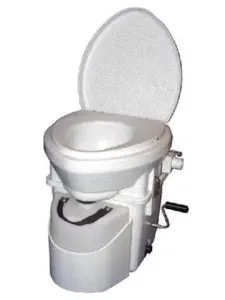Ever since writing about our new mini-cabin project at the farm a few weeks back, we have been inundated with questions about using composting toilets.
Are they easy to install? Do they smell? How much do they cost?
And probably asked most frequent of all, how do they actually work?
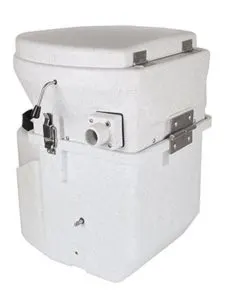
A dry process composting toilet from Nature’s Head.
Composting Toilets – A Viable Solution To Remote Bathrooms
For many, composting toilets can be the perfect solution for providing a bathroom in a remote area. Whether it be a lakeside cabin, an off-grid house, a tiny home, or even a camper.
In other words, anywhere that modern plumbing isn’t available.
For us, it would have simply been impossible to try to hook our little mini-cabin up to the main septic system at the top of the hill. Not only is it cost-prohibitive, it would require a true engineering feat to pump the waste uphill.

Composting toilets are great for remote cabins, homes, or anywhere traditional plumbing can’t be accessed.
But a compost toilet is completely self-contained. All without the complications of installing indoor plumbing.
And that means it will allow us to have a private bathroom available for guests to the cabin.
Best part of all – they really do work incredibly well!
Just What Is A Composting Toilet?
For starters, composting toilets are toilets that use the process of natural decomposition to process waste. And that includes waste in both liquid and solid form.
There are a lot of designs for these off-grid toilets on the market. A few use water as a mechanism for helping to flush. That process still involves some form of plumbing, or filling up a holding tank for flushes.
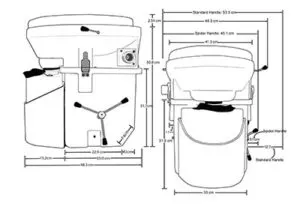
The self contained design of the Natures Head dry toilet
But the majority of compostable toilets use no water at all. They are aptly named dry toilets.
A dry toilet uses carbon materials such as peat moss, sawdust, or even compost to help absorb and decompose waste in the holding tank.
How Often Do They Need Emptied?
When properly used, the waste from a compost toilet naturally decomposes in the tank. The dry carbon material absorbs any odors while helping to break down the solid waste.
In many designs, the liquids and solids are separated to speed up the decomposition process.
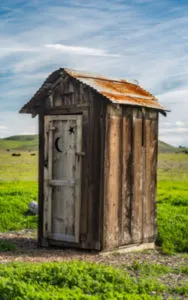
Composting toilets are a much more modern solution that the ol’ outhouse!
In the end, what comes out is a safely composted soil that has no waste or smell.
Depending on the size, style, and the amount of users, compost toilets can go without emptying anywhere from a few days, to 6 months or more.
Some even opt to install a large composting holding tank that can be pumped out once a year. This method is great for toilets that will see a lot of continued use.
Our Compost Toilet For The Cabin
So that brings us to our mini-cabin project. See : Converting A Shed Into A Mini Cabin
For our cabin get-away facilities, will be using a Nature’s Head Self Contained Compost Toilet.
We actually selected it for several reasons – ranging from it’s simple installation, to long term durability and ease of use and maintenance. See : Natures Head Close Quarters Compost Toilet
Installation
First, the installation. It takes only two small “I” brackets to mount to any flat surface. You really can’t get much more simple than that!
In addition, it doesn’t require existing plumbing or tank lines to be installed prior to setting it in place.
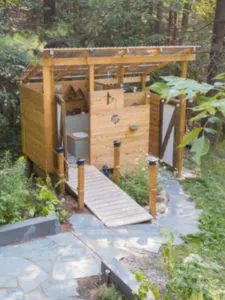
We love this attractive design, using a composting toilet and outdoor shower
In fact, beyond the two brackets, the only additional installation requirement is to position a small ventilation hose to the outside.
The toilet is compact and lightweight. The design is perfect for fitting into our small, attached lean-to that will hold the self-contained shower / bathroom area.
The toilet does use a small computer-style fan to run the vent.
It can be powered by a 12 volt hook-up run from a battery or solar. The fan can also be plugged into an outlet if a/c power is available.
One nice feature is that if there were no options for power, it can be run completely without power using a solar vent.
Our Nature’s Head unit will run entirely from the rooftop solar panels and battery system we are installing : See Solar Power For The Cabin
We will be sure to keep you updated on the progress of the mini-cabin. Happy Simple Living! Jim and Mary.
To receive our 3 Home, Garden, Recipe and Simple Life articles each week, sign up below for our free email list. You can also follow us on Facebook, Twitter, Pinterest, or Instagram. This article may contain affiliate links.

